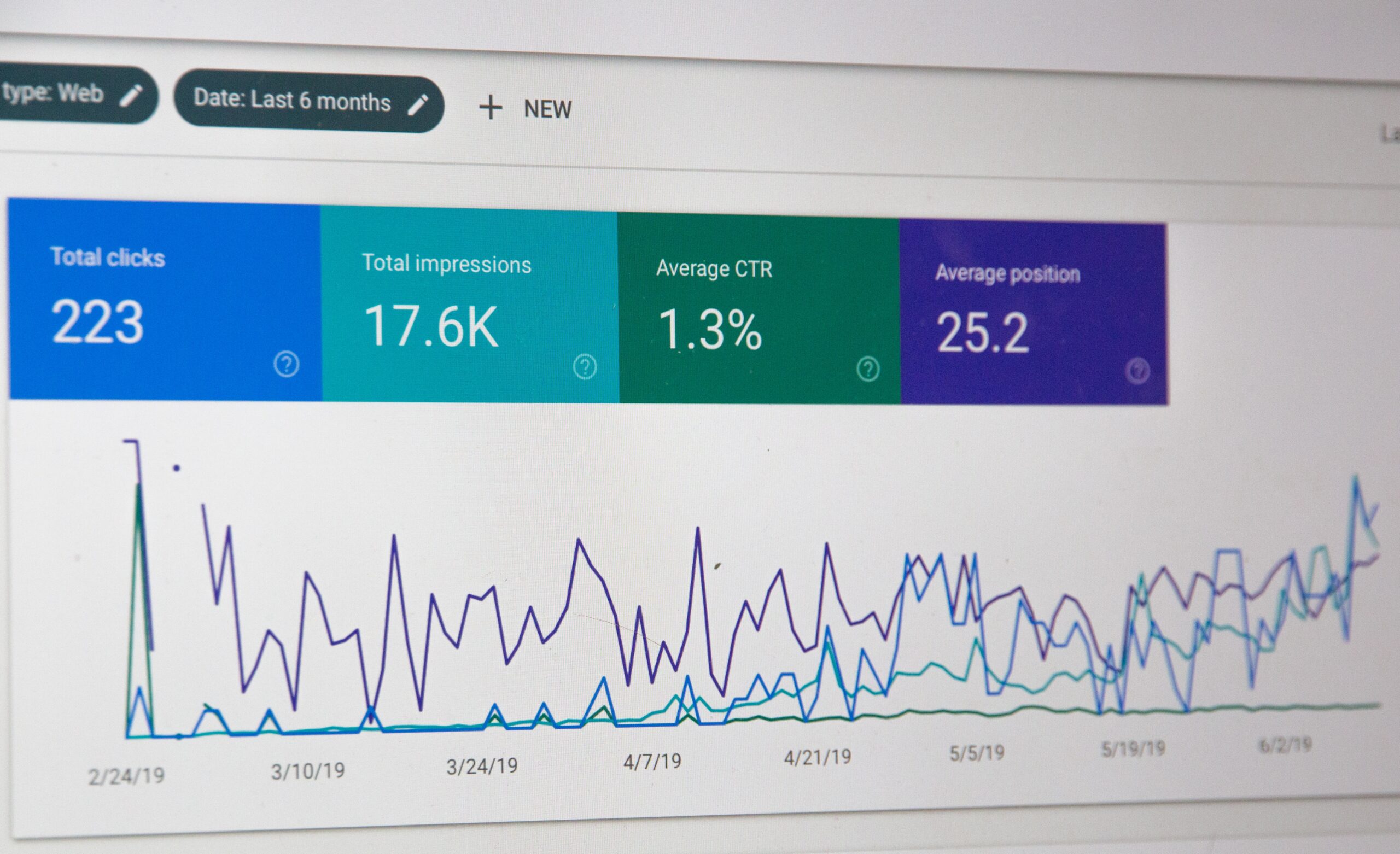Closed Loop Marketing: Boosting Sales with Efficient Strategies
Closed-loop marketing relies on data-based information to improve your return on investment (ROI) and increase your marketing efforts to more excellent results. “Closed loop” means monitoring the continuous feedback loop established in conjunction with the sales and marketing teams to best understand your marketing channels in generating leads.
With closed-loop marketing, you will attract potential customers through various marketing channels like SEO, email, social media, and other targeted campaigns. The conversion data and visitor interactions with these channels are tracked and analyzed to understand which channels generate the most qualified leads for your business.
Marketing receives crucial feedback as leads progress through your sales funnel. The marketing team can then determine the most effective channels for marketing and adjust their strategies as necessary. Data and insights generated from customer interactions optimize your marketing efforts, ensuring you allocate resources to the proper channels.
To implement closed-loop marketing effectively, your sales and marketing teams must communicate clearly. Together, they should share data and insights and align goals and objectives. The collaborative approach is key to creating a seamless customer journey, from attracting leads to converting them into customers.
A successful closed-loop marketing strategy can help you:
Identify high-performing marketing channels.
Optimize marketing budgets by targeting effective lead sources.
Improve customer targeting by understanding their preferences and behavior.
Enhance lead nurturing processes for better sales conversion rates.
Implementing closed-loop marketing can take some time and effort to perfect. It requires consistent data analysis, team collaboration, and making informed decisions based on factual insights. It can significantly enhance your ROI once it has been established.
A Visitor Arrives On Your Website
When a visitor arrives on your website, it indicates the beginning of the closed-loop marketing process. Tracking and attributing visitors is crucial as a marketer, and knowing the appropriate marketing channel is vital. Your business can generate revenue when you use this data effectively.
Upon arrival, a cookie is set on the visitor’s referral source. This is the foundational step of the closed-loop marketing system. Cookies enable tracking visitors through your site’s various marketing and sales stages. You can use this information to optimize and refine your marketing campaigns.
You can drive traffic to your website via social media pages, search engines, or email campaigns. Identifying the channels with the greatest effect in driving traffic and conversions is essential – this can help you use your resources strategically and efficiently to improve your overall marketing approach.
As you gather visitor behavior and interactions on your website, closed-loop marketing can help you generate revenue from this data. The ROI for different marketing channels can be calculated by linking visitor, conversion, and revenue data. You can then make data-driven decisions about your future marketing strategy based on each technique’s effectiveness.
Remember that closed-loop marketing aims to track conversions and goals and create a more accurate and reliable measurement process focusing on revenue generation. Leveraging closed-loop marketing data can help you become a more effective marketer and contribute significantly to your business’s growth and success.
How Does Closed Loop Marketing Work?
However a visitor arrives at your website, the objective is to provide visitors with valuable and relevant content that will prompt them to take the desired action.
When visitors visit your website, their behavior is monitored and tracked. Your marketing efforts can be more effective if you know your visitors’ preferences and behavior. Track their visit to each page, how long they spend on it, and what they engage with.
Next, the visitor converts into a lead by completing a lead generation form, purchasing, or subscribing to your newsletter. At this point, the information collected from the authority is sent to your CRM (Customer Relationship Management) system or marketing automation tool, helping you identify, score, manage, and nurture your leads.
The crucial aspect of closed-loop marketing comes into play when the sales and marketing teams work together to share information. Your sales team provides the marketing team with information about the leads’ progress through the sales funnel. This allows both groups to understand better which lead sources and marketing channels are the most effective and make data-driven decisions for future campaigns.
In closed-loop marketing, converting a visitor into a lead is crucial. To achieve this, you need to employ lead-generation forms on your website or landing pages. These forms collect information from the visitors, such as their name, email address, phone number, and other relevant data.
Make your lead generation forms user-friendly and straightforward. Avoid asking for unnecessary information, as it could deter potential leads from filling out the form. Remember that designing and placing this form on your website impacts the number of leads you can generate.
Optimize your form with a clear call-to-action (CTA). Ensure that the visitors understand what they will receive by providing their information. For example, if they sign up for an email newsletter, state it clearly on the form.
Focus on offering value to your visitors. Offering incentives like discount codes, a free e-book, or access to exclusive content entices them to complete the form. Benefits should align with your target audience’s interests and needs.
Once the visitor completes the lead generation form, you convert them into leads. Nurturing this lead through targeted marketing efforts such as personalized email campaigns and remarketing ads is essential. This will help move them further down your marketing funnel and, eventually, turn them into paying customers.
By carefully crafting your lead generation forms and offering value, you can effectively convert visitors into leads in your closed-loop marketing strategy. This will help you identify the effectiveness of your marketing tactics and enable you to make data-driven decisions for future campaigns.
Teams Are Focused On Separate Stages Of The Funnel
The process involves focusing on separate marketing funnel stages to ensure smooth transitions and a high conversion rate.
Your marketing team must create awareness and interest in your product or service. Your brand reach increases as it engages potential customers in your marketing stream, including social media, email campaigns, and content marketing.
At the same time, the sales team should prioritize nurturing leads and closing sales. Through personal emails, phone calls, or product demonstrations, your sales team engages qualified leads as they progress through the marketing funnel and become Marketing Qualified Leads (MQLs).
Both teams must communicate and share insights to streamline the process and improve its performance. When your sales team provides feedback on which leads converted and why, your marketing team can use this information to refine their strategies and attract higher-quality leads. Similarly, your sales team can benefit from marketing insights to understand which channels and messages resonate the most with different lead segments.
By focusing on separate stages of the funnel and collaborating closely, your marketing and sales teams can work together more effectively and drive better results for your business. Remember to continuously track and analyze key metrics at each stage to optimize your closed-loop marketing efforts.
Things You Must Know Before Starting With Closed Loop Marketing
1. Define closed-loop marketing
Closed-loop marketing is a strategy that continuously improves marketing efforts based on data and insights from the entire marketing and sales process. A feedback loop is created between sales and marketing teams to track, analyze, and optimize performance.
2. The Importance of Data and Analytics
You need access to accurate and relevant data to make closed-loop marketing effective. To determine which marketing strategies work well and which need improvement, you must collect and analyze data on lead sources, engagement, and conversion rates. A unified system for tracking results and investing in data analytics tools are crucial for success.
3. Align Sales and Marketing Teams
Closed-loop marketing requires strong collaboration between sales and marketing teams. By working closely, these teams can share valuable insights and make informed decisions about tactics and strategies. This collaboration helps with lead tracking and conversion and fosters better communication, enabling both teams to work more efficiently and reach common goals.
4. Implement a Continuous Improvement Process
The key to closed-loop marketing is continuous improvement. Set up regular meetings to discuss data, insights, and results to achieve this. Maintain a constant feedback loop where you address issues, identify best practices, and make strategic adjustments. This lets you iterate and fine-tune your marketing campaigns, thus improving their performance and ROI.
5. Choose the Right Tools to Support Your Strategy
CRM systems, marketing automation platforms, and analytics software can all support closed-loop marketing. You will accomplish your objectives step by step by choosing and integrating the right solution. The process of making data-driven decisions is more effective when it is automated. The result is more efficient marketing campaigns and maximum impact.
The Lead Converts Into A Customer Or Client
In closed-loop marketing, converting a lead into a customer or client is crucial. By following these guidelines, you can increase your chances of turning leads into satisfied customers:
1. Nurture leads through their journey. As leads progress through different stages, such as marketing-qualified leads (MQLs) and sales-qualified leads (SQLs), it’s essential to nurture them with relevant content and offers. This helps in building trust and fostering a deeper connection with your brand.
2. Personalize your marketing efforts. Personalizing your marketing communications and offers helps significantly increase conversion rates. Analyze data points like user behavior, preferences, and past interactions to create tailored promotions and messages for target leads at various stages in the sales funnel.
3. Align sales and marketing teams. Establish clear communication and collaboration between sales and marketing teams to deliver a consistent message and experience. This alignment ensures that both teams can access the same data and work together to convert leads into customers.
4. Optimize your website for conversions. Ensure your website has compelling calls-to-action, easy-to-use contact forms, and engaging content. By providing a seamless user experience, you can encourage leads to take the desired action, such as purchasing or requesting more information.
5. Monitor and evaluate performance. Regularly analyze your conversion rates to identify areas for improvement. You can optimize your efforts in converting leads into customers by continuously monitoring key performance indicators (KPIs) and adjusting your marketing strategies accordingly.
Remember, closed-loop marketing is an ongoing process, and successfully converting leads into customers or clients requires constantly refining your strategies. By diligently following these best practices, you can make a lasting impact on your target audience and drive revenue for your business.
Benefits Of Closed Loop Marketing
Leads to Better Decision-Making
Your marketing campaigns can be more effective when you use closed-loop marketing. Having data and insights on the performance of your campaigns will help you make better decisions to optimize future strategies. Tailoring your marketing efforts to match your target audience’s interests better results in higher engagement, conversions, and ROI increase.
Traffic Generation
Successful marketing campaigns depend primarily on generating traffic to your website or landing pages. Closed-loop marketing can better understand which marketing channels drive the most traffic and contribute to lead generation. Your strategy should be adjusted according to the most effective channels: SEO, email, social media, and paid advertising. The benefits of closed-loop marketing include improving your marketing performance and making informed decisions based on data-driven insights.
Your teams must utilize various tools and software to maintain a data-driven approach and improve collaboration.
One popular tool is Microsoft Teams. This platform lets your team streamline communication and collaboration, including setting campaign objectives and discussing marketing themes. They can also coauthor documents, upload shared files, and gather campaign data using Excel in a tab.
In addition to Microsoft Teams, there are other performance-tracking tools to consider. For example, consider exploring top-rated marketing performance tools that can help you efficiently track the impact of your marketing efforts. You can use these tools to identify the most valuable leads, sales, and customers.
Customer journey mapping tools play a vital role in closed-loop marketing. They enable your support, sales, and marketing teams to manage and track cross-channel journeys more cohesively. As the customer journey progresses, these tools ensure your team stays on top of their needs.
The 5 Steps of Closed Loop Marketing
How To Close The Loop Between Your Data
To close the loop between your data, you should first understand the customer journey and determine the key data points needed for analysis. Next, integrate the data from different sources like CRM, marketing automation platforms, and web analytics tools. Finally, analyze the data to identify patterns and gain actionable insights.
Our Digital Marketing Campaigns Impact The Metrics That Improve Your Bottom Line
To ensure your digital marketing campaigns impact your bottom line positively, start by setting clear objectives and identifying relevant KPIs. Measure and track these KPIs during the campaign, and adjust your strategies as needed based on the results.
Use Closed-Loop Marketing Tools To Track Essential Data And Insights
There are several closed-loop marketing tools available to help you track data and insights, such as:
CRM systems: Manage customer interactions and collect data on their behavior.
Marketing automation platforms: Automate marketing activities and measure their success.
Web analytics tools: Track website performance and user behavior to optimize the user experience.
Attract And Identify Your Site Users
To attract and identify site users, use a mix of marketing channels to reach your target audience. These include SEO, paid ads, content marketing, and social media. Once the visitors are on your site, use cookies or analytics tools to gather information about their behavior and interests, which can be used to personalize their experience and nurture them as leads.
Capture Website Visitors On An Individual Level
Tracking website visitors on an individual level is crucial. Using tools like marketing automation platforms and CRM systems, you can monitor each visitor’s actions on your site, such as pages viewed, downloaded resources, or submitted forms. This information can then be used to create targeted marketing campaigns that are more likely to convert these visitors into leads and, eventually, customers.
Optimize Your Marketing Strategies
Using the data and insights gathered through your closed-loop marketing efforts, analyze the performance of your marketing campaigns and their impact on KPIs. By identifying which channels and activities are most effective at driving leads, conversions, and revenue, you can then optimize your strategies to focus on these prosperous areas and continuously improve your marketing ROI.
Leads Go To Your CRM
When you implement closed-loop marketing, your leads are sent directly to your customer relationship management (CRM) system. This enables you to track and attribute the leads to their sources, such as specific campaigns or channels. Doing this gives you valuable insights into which marketing efforts drive the most revenue, allowing you to optimize and allocate resources more effectively.
Your CRM captures and stores potential customers’ information after they interact with your marketing materials. It may be something as simple as filling out a contact form, starting a live chat, or placing a phone call. If the lead is deemed qualified, your sales team will engage with them accordingly.
Integrating your CRM with analytics platforms, like Google Analytics, can help add another layer of insight to your closed-loop marketing. This allows you to see the entire journey of a lead, from their first interaction with your marketing efforts to their eventual conversion. This approach results in a continuous data-driven improvement to your marketing strategy.
Maintaining clean and current CRM data is critical during this process. Make sure your CRM is consistently organized, de-duplicated, and maintained. This ensures accurate tracking and improves visibility into the effectiveness of your marketing efforts.
Remember that closed-loop marketing aims to bridge the gap between marketing and sales teams. By sharing data and collaborating effectively, you can create a more streamlined and successful process, ultimately driving revenue growth.
Send Attribution Data To The CRM
To effectively implement closed-loop marketing, you must send attribution data to your Customer Relationship Management (CRM) system. This process ensures that all relevant information on leads and their sources is stored in one central location, enabling you to track marketing campaign performance efficiently.
First, establish a method for collecting lead source data. This can typically be done through web forms, phone call tracking, or live chat activity on your website. By capturing this data, you can identify which marketing channels generate the most value and focus your efforts on those areas.
Consider integrating your CRM system with Google Analytics or other marketing platform to streamline the process. This will allow you to automatically import lead source data into your CRM, avoiding manual input and potential errors.
Once your lead source data is integrated with the CRM, map this information to specific fields in the system. This is important because it allows you to easily segment your leads based on their source, enabling targeted marketing efforts that cater to each group’s unique preferences and behaviors.
Additionally, implementing an attribution model helps determine the touchpoints that contribute the most to lead conversions and revenue generation. This enables you to allocate your marketing budget more accurately and efficiently.
Finally, continually monitor and analyze the data within your CRM system. This allows you to adjust and optimize your marketing strategies based on the insights from closed-loop marketing reporting.
Remember, sending attribution data to your CRM system is vital to closed-loop marketing. By following these steps, you’ll be well on your way to achieving greater marketing efficiency and maximizing revenue generation.
Leads Become Customers
The primary goal is to convert leads into customers. To turn leads into loyal customers, marketers need to nurture them through the sales funnel. Analyzing your marketing efforts and audience data is part of this process.
In a closed-loop marketing cycle, a visitor’s arrival on your website marks the start of the cycle. You must track where your visitors are coming from at this point. Search engines, social media, email campaigns, or referrals are some of the ways they may find your website.
Offer valuable content tailored to the needs of the potential leads once you’ve identified the source. You can write blog posts, create case studies, or host webinars. To encourage leads to take action, you must position your brand as a trustworthy resource.
Personalization is another significant component of turning leads into customers. By analyzing your audience’s behavior, preferences, and demographics, you can create targeted campaigns catering to their interests and requirements. This increases your chances of conversion and strengthens the relationship between your brand and the leads, making them feel valued and understood.
As your leads progress along the customer journey, your sales team plays a crucial role in transforming them into customers. Good communication and customer relationship management (CRM) tools can help your sales team effectively manage and follow up with the leads. Working closely with your sales team, the marketing department should also track the progress of your leads and analyze their response to the marketing efforts. This, in turn, helps in optimizing your strategies by identifying the best and worst-performing lead sources.
Evaluate and refine your closed-loop marketing tactics regularly. Continuously monitoring the performance of your marketing campaigns and making data-driven adjustments will enable you to increase the effectiveness of your strategies, resulting in more leads turning into customers.
Visitors Become Leads
You must turn your website visitors into leads. It would be best to have a thoughtfully designed website and compelling content that grabs the attention of your potential customers. Implement strategies that engage visitors effectively and encourage them to explore what you offer.
Create high-quality content addressing your target audience’s interests, concerns, and needs. Position yourself as a trusted expert by providing value to visitors. Design your website in such a way that visitors can access content easily and efficiently.
Offer gated content or special offers requiring visitors to complete a web form. This will enable you to collect their contact information. Examples of gated content include ebooks, whitepapers, webinars, and discounts. Ensure the web form is simple and asks for only relevant information, as overcomplicated forms may deter potential leads.
By filling out the web form, visitors will become “leads” for your sales team. Salesforce, Zoho, or Microsoft Dynamics can be used to store the collected data. Leads can be tracked and managed easily using this process, thereby enhancing the ability of your sales team to close sales.
Make sure that your tone of voice is confident, knowledgeable, neutral, and clear as you implement closed-loop marketing strategies. Make your content more engaging by addressing your audience from the perspective of a second person. This approach will increase the likelihood of visitors becoming leads and, ultimately, customers, strengthening your overall marketing performance.
Get Started With Closed-Loop Marketing Today
Step 1: Implement a tracking system. Your website should be equipped with a tracking system. This involves placing cookies on your visitors’ referral sources. As leads progress through your sales and marketing stages, the cookie will enable you to attribute them back to the proper channel. This tracking is crucial for identifying which aspects of your marketing funnel need improvement.
Step 2: Implement lead tracking. Closed-loop marketing relies on tracking leads throughout the entire sales and marketing process. By assigning unique identifiers to each lead, you can track their journey from the initial point of contact to closing a deal. This information will help you understand which marketing efforts impact conversions and revenue most.
Step 3: Align sales and marketing teams. One of the core aspects of closed-loop marketing is the collaboration between your sales and marketing teams. Ensure both teams understand the closed-loop strategy’s goals and processes and regularly communicate and share data. Establish clear guidelines for transferring leads between teams to ensure seamless data flow and avoid potential conflicts.
Step 4: Utilize marketing analytics tools. You will need robust marketing analytics tools to analyze and measure your marketing campaign’s effectiveness. Various platforms can help you track visitor engagement, conversions, and revenues associated with your marketing efforts. Choose a tool that offers customization and compatibility with your existing systems.
Step 5: Continuously optimize your marketing efforts. A closed-loop marketing strategy is particularly beneficial when it involves making informed decisions based on accurate data. After you’ve collected data, analyze it regularly to identify strengths, weaknesses, and trends. Enhance your ROI by refining your strategies, discovering growth opportunities, and identifying new opportunities.
Revenue Is Attributed To The Original Source
Revenue attribution plays a crucial role in understanding the performance of your marketing campaigns. By attributing revenue to the source, you can identify the specific campaigns, channels, and keywords that drive the most and most minor conversions.
You must implement a first-touch attribution model to get started with revenue attribution in closed-loop marketing. This model credits all revenue to the initial source that generated the lead, allowing you to measure your marketing efforts’ return on investment (ROI) and effectiveness.
Using a closed-loop reporting tool, such as Ruler Analytics or HubSpot, can streamline the process of attributing revenue to your marketing campaigns. These tools provide valuable insights by connecting revenue data and conversions to their sources. This data lets you optimize your marketing strategies for better outcomes and make data-driven decisions.
Consider the following when analyzing your marketing performance:
Channels: Look closely at the channels that produce the most and least revenue, such as social media, email marketing, and pay-per-click (PPC) advertising.
Campaigns: Measure the effectiveness of individual campaigns in generating revenue and delivering high-quality leads.
Keywords: Identify the keywords that attract potential customers and drive conversions.
You can continually refine your marketing efforts by focusing on these key areas and attributing revenue to the original source, leading to increased revenue for your company. If you want to maximize your ROI from closed-loop marketing, you must constantly monitor and analyze the process.
What Kinds Of Customers Can You Reach With Closed Loop Marketing?
With closed-loop marketing, you can reach a wide variety of customer segments to achieve your desired marketing outcomes. By leveraging data-driven insights, this marketing strategy enables you to create targeted content designed for different customer types. With closed-loop marketing, we can reach a variety of customers.
Your products or services can be seen by potential customers interested in what you offer. These potential customers are your leads. By tracking their interactions, such as clicking on a particular product or downloading a piece of content, you can create personalized marketing campaigns to convert them into paying customers.
Next, you can engage your current customers. Regular communication with your existing customer base is crucial for building brand loyalty and encouraging repeat business. Closed-loop marketing ensures that your efforts to reach them are backed by concrete data, allowing for more relevant, targeted messaging that truly resonates with them.
Additionally, you can leverage closed-loop marketing to re-engage lost customers or prospects who have previously shown interest but are inactive. By analyzing their past interactions, you can develop tailored campaigns that address their specific pain points or needs, reigniting their interest in your brand and increasing the likelihood of a sale.
Finally, closed-loop marketing can also help you target underserved segments within your audience. Using data to identify gaps in your marketing efforts, you can refine your strategies to address these customers’ unique needs and preferences, effectively expanding your reach.
Closed-loop marketing allows you to connect with various customer types, including leads, existing customers, lost prospects, and underserved segments, enabling a more targeted and effective marketing approach.
Continuously Evaluate the Results and Make Improvements
Track your KPIs to measure the success of your marketing initiatives. You can adjust your strategy accordingly if you analyze your KPIs. Some common KPIs are customer acquisition cost, return on investment, and conversion rate.
Analyze customer data: Data analysis can help you gain insight into your customers’ preferences and behavior by looking at the information you’ve collected about them. With this information, you can better tailor your marketing campaigns to meet their needs and boost your return on investment.
Track your Campaigns: Exploring the data collected about your customers gives you a deeper understanding of their norms across multiple channels. This will help you identify which campaigns are driving the most success and where you need to make changes for improvement.
Implement A/B testing: To determine which marketing campaign version performs better, use A/B testing to compare two different versions. In addition to email subject lines, landing pages, and ad creatives, this approach can be applied to various aspects of your campaigns. By using A/B testing to refine your campaigns, you can improve their effectiveness.
Adjust your strategy: Make any necessary adjustments to your marketing strategy based on the insights from your data analysis. Improve your efficiency by implementing changes and evaluating your results to ensure they are successful.
To maximize your ROI, you must continuously evaluate and improve your closed-loop marketing strategy. Data-driven techniques can enhance your marketing efforts and lead to better results by making adjustments based on the performance of your campaigns.
Create Your Customer Database
To begin with closed-loop marketing, you must create an efficient customer database. Gathering and organizing customer interaction data to analyze customer preferences and make informed marketing decisions is important. Building a strong customer database can be accomplished using the following step-by-step process:
Compile customer information: You can personalize your marketing campaigns by obtaining names, email addresses, phone numbers, and other relevant information. These details can be collected from your audience using tools such as sign-up pages, CRMs, and web forms.
Categorize your leads: You can tailor offers and messages to your customers by segmenting them by preferences, location, and purchase behavior. By doing so, you can increase the relevance and impact of your marketing campaigns.
Track customer interactions: Your marketing campaigns should be recorded, including page views, clicks, email opens, and more. With this information, you can optimize your efforts and focus on marketing activities that perform well.
Sync your data: Create a seamless data flow between your marketing and sales platforms. Your customer database will be managed more effectively this way, and your organization’s information will be consistent.
These steps will help you implement closed-loop marketing strategies and achieve measurable success with your marketing campaigns if you follow them and maintain a comprehensive customer database. Your marketing efforts should remain relevant and adapt to the changing needs of your customers by continually updating and refining your database.
Platforce is the best CRM software for lead generation, order management, sales automation, and task management. Unlike other software, Platforce gives your company all it needs to optimize customer relations and boost customer experience. Try out the Platforce CRM system with a demo or tour now. You can also stay updated on our Youtube and LinkedIn channels.






























